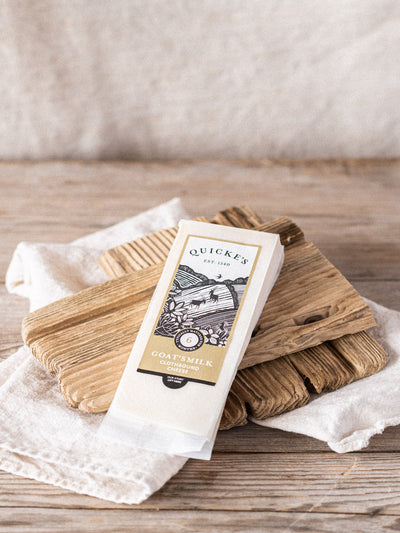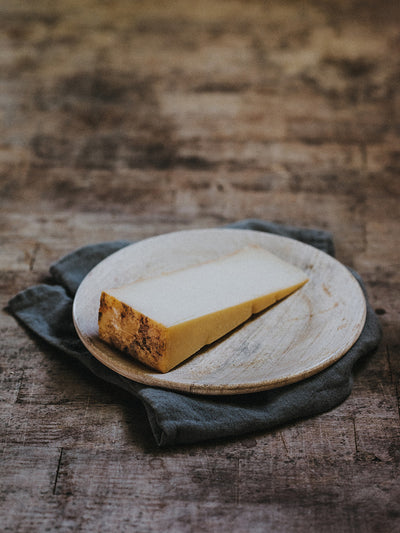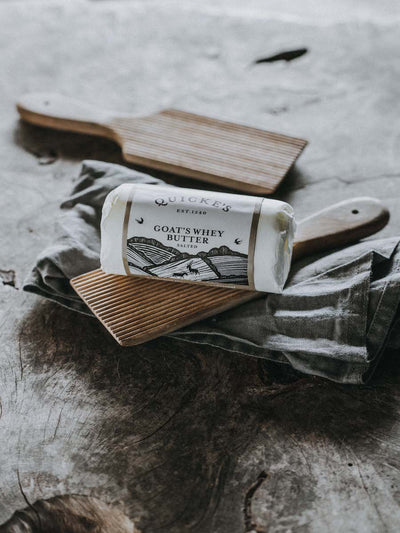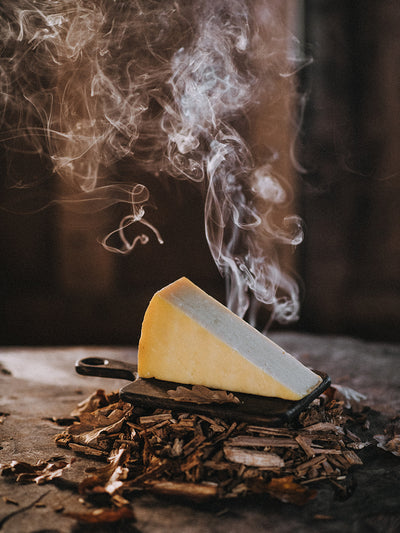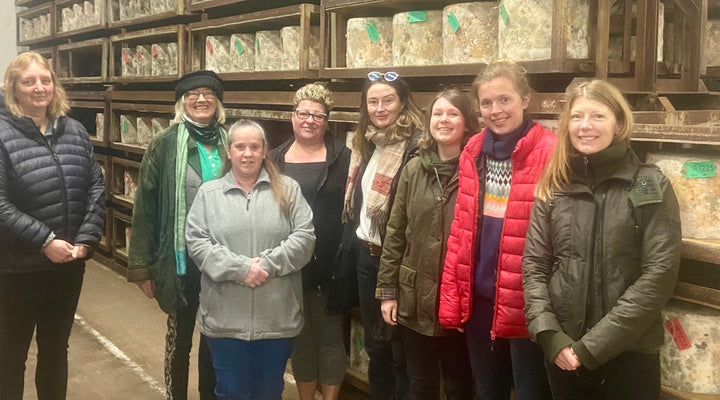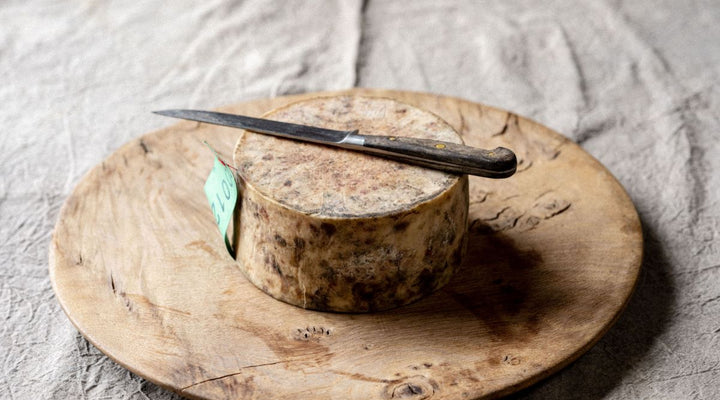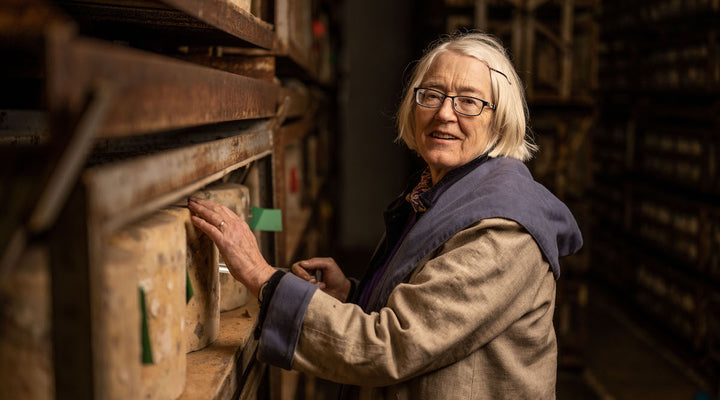Nature
April is when the whole of spring roars into gear. The sun is in the same place as it is in August, so there's been plenty of light to drive growth. Up to now, our cool northern ocean has kept the lid on the temperatures, and that has limited what is willing to grow (who wants to stick their most tender parts out into a chilly east wind?). The stronger sunlight means plants just can't help themselves growing, and we are off on the wild, bacchanalian frenzy of spring.
Hedgerows explode with Queen Anne's Lace, the primroses plants covered with flowers, far from prim, like wedding bouquets. Bluebells coat damper woodland. Britain has half the world's bluebells, and it's a wonderful treat to catch that evanescent hyacinth scent on the breeze. Wild garlic is at its fullest, stinking lily, for the most delicious wild-gathered soup. Blackthorn flowers dress the bare black branches like a sumptuous gown, the promise of sloes to come. Sticky grass runs rampant. Last year I made a surprisingly tasty herb tea with that and nettles that reminded me of spring all year long. If green tastes of something, it would be that.
Fat bunny babies appear, put on the earth seemingly to provide badgers, foxes and buzzards plenty of tender meat for their own young. Deer babies hide up in undergrowth in the woods, while their mothers graze to make the milk to feed them. Deer keep safe by their remarkable speed and ability to jump and it takes awhile before the long-legged delicate fawns are fleet enough to keep up.
Arable
Our crops hear the beat of the dance and start growing, spreading leaves first to cover the ground to harvest all the sunshine, then reach to the sky pridefully seizing the most sunlight to make the biggest grains. Except all your neighbours are doing the same and the fields don't stay still from one day to the next. A well nourished field supported by a good soil structure will give an even field all the way over, the secret of good yields. That's when all the plantlets have the same access to growth and all spur each other on and keep each other in check.
Grass
We've being waiting for this moment on the pasture. Ever since we turned the cows out on 12th February, they have been eating faster than the grass grows. Gradually the amount of grass cover on the whole farm drops and there is always a point where you wonder where the next week's meals are coming from for the increasingly hungry cows as they ramp up to full yield. Suddenly the green tide turns. No longer do you walk the pastures and see the soil between grass plants. No longer are there too many fields with the pale green of early growth. Suddenly you walk into pastures and there are fields with heavy leaves nodding in the breeze, and we all breath a collective sigh of relief. The silage pit looked remarkably empty to support all those cows when the grass just stood still and wasn't keeping up with the cows.
Cows
The spring-born calves are at their sweetest, most playful, most joyful. It's funny to watch them watching their mothers walk past for milking. Each think the other is interesting, and they will stop and gaze, then like mothers and primary school children, they almost give a shrug and a skip (the calf end) and walk on. Things to do, people to see, milk to make.
We will finish off the fodder beet and kale for the older heifers, before that goes to head and becomes fibrousy and tough. Fodder beet (mangel wurzels) give a ridiculously high yield, so the heifers clump together to finish the last of the crop. Then they are off, exploring their grazing pastures. It's really satisfying to see how the perennial pastures that we have created over the past few years are really getting into their stride now. The soil structure restores, the organic matter lifts, the soils feel and behave like they are full of life in a way they never can be under an arable crop. The soils start sequestering huge amounts of carbon dioxide. We can keep many more animals on the pastures than they were supporting with their arable production. What it means for our heifers is that they have spectacular views, but they don't change as much as they might, as each area holds its own group of heifers for the whole season long, rotating around the paddocks of a large field, rather than running around finding new paddocks. That's the idea, and it works until someone leaves the gate open. The way the farm works, they oftentimes find their way into my garden, funnelled here by the woods.
It's lovely to see you girls, thanks for the calling cards, and let's get you safely tucked into a field. Luckily, they will follow a call rather than having to round them up.
The cows are now settling into their spring routine. The grass is very lush with low fibre, and very rich, so milking is exciting, dodging any tail-lifting activity. And it is remarkable how clean milk is, how well separated from everything that emerges from the back end of a cow. It's a real testament to the skill of milkers.
The new parlour is working really well. It is windy, too cold on wet hands, so we will put up so wind protection. The cows are so happy to come into somewhere which barely feels like a building to them. They can see out of the sides, and can see through beyond the shed to where they are going, so there is no sense of a trap, which is how enclosed buildings can seem to them.
Dairy
The cheese we are making is golden and lively. Coming into peak milk, words are short as we make the most cheese of any months of the year. And however full the vats, and even when we have four vats, the team keep their focus on all of those things that make the difference. Which is always everything. As Malcolm Mitchell says: "We just everything we know we must do". Just there is a lot more than of it to do as the milk rises to a peak.April is when the whole of spring roars into gear. The sun is in the same place as it is in August, so there's been plenty of light to drive growth. Up to now, our cool northern ocean has kept the lid on the temperatures, and that has limited what is willing to grow (who wants to stick their most tender parts out into a chilly east wind?). The stronger sunlight means plants just can't help themselves growing, and we are off on the wild, bacchanalian frenzy of spring.

